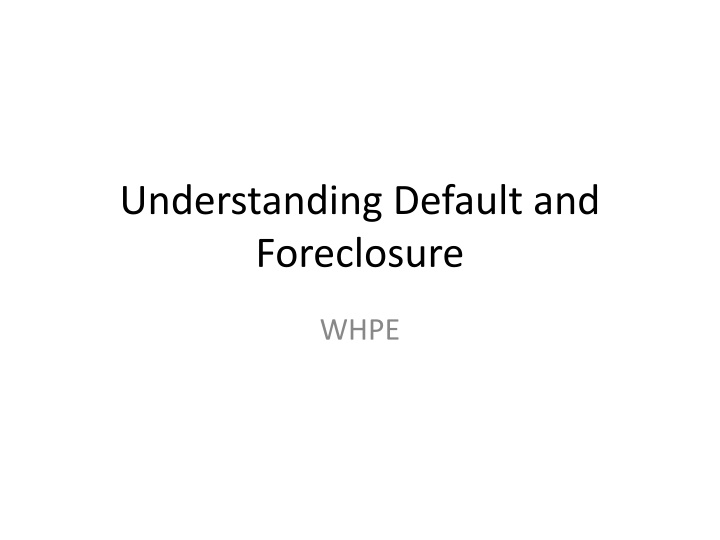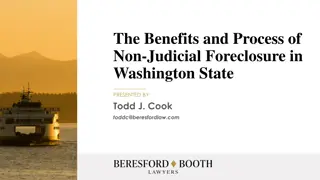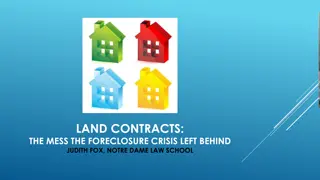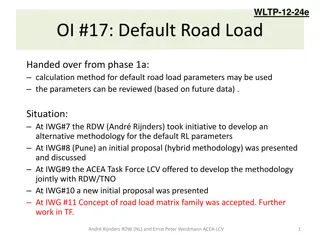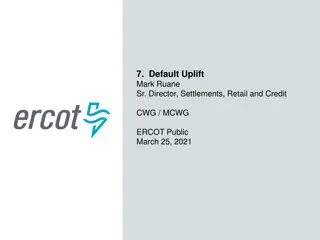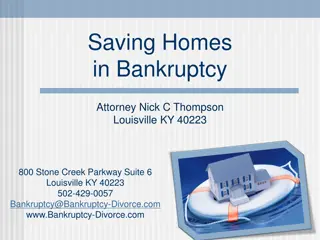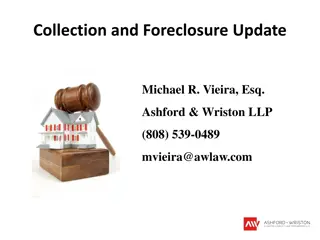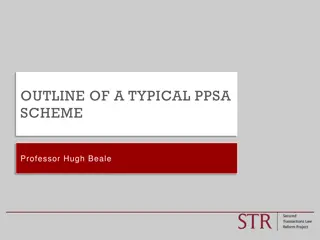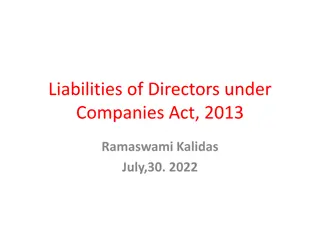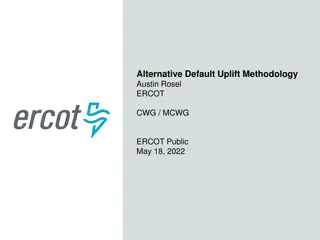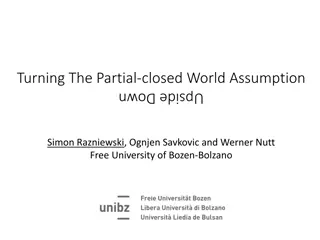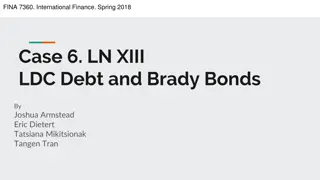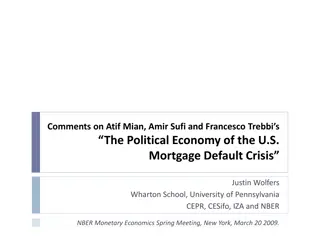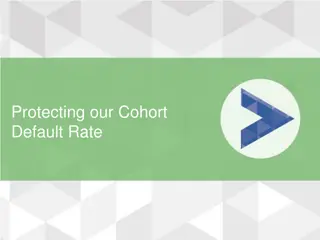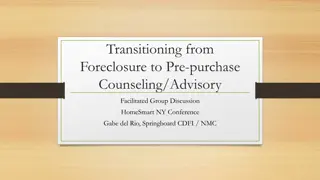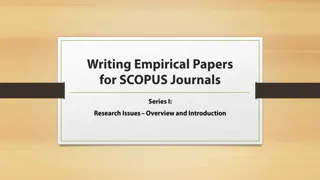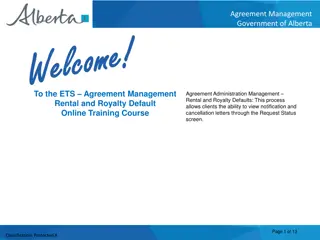Understanding Default and Foreclosure
When a homeowner fails to make payments, they may face default and foreclosure. Learn about the legal process, outcomes, and steps to take in case of default. Discover where to seek help and the necessary documents.
Download Presentation

Please find below an Image/Link to download the presentation.
The content on the website is provided AS IS for your information and personal use only. It may not be sold, licensed, or shared on other websites without obtaining consent from the author.If you encounter any issues during the download, it is possible that the publisher has removed the file from their server.
You are allowed to download the files provided on this website for personal or commercial use, subject to the condition that they are used lawfully. All files are the property of their respective owners.
The content on the website is provided AS IS for your information and personal use only. It may not be sold, licensed, or shared on other websites without obtaining consent from the author.
E N D
Presentation Transcript
Understanding Default and Foreclosure WHPE
Goals of this Chapter To provide: General background on default and foreclosure. Outcomes of default (short term and long term). Legal process of foreclosure.
Understanding Default When a homeowner fails to make a payment, he or she is violating the contract, which is then in default. Self-analysis: 1. What caused my default? How long will the problem last? 2. What is my expected income over 1 month, 6 months, and 12 months? 3. Review your payment history 4. Review the terms of your loan 5. Estimate your home value and condition
Worst-case Outcome of Default Foreclosure is the legal process in which a person has defaulted on a mortgage payment, and therefore loses his or her rights to the mortgaged property. borrowers generally have at least 60 days from their first missed payment to take action foreclosure process concludes when the borrower pays off the loan or signs the home over to the lender
Where to go for Help Lenders typically offer several options to borrowers prior to initiating the foreclosure process. Foreclosure Prevention Counseling: 1-888-995 HOPE www.995HOPE.org Wisconsin Housing Counselors Beware of rescue scams.
Talking to the Lender Before you contact your lender, you need to have some documents and information available: Opened mail from your lender Your account number Your hardship information/present circumstances
Additional Information and Documents The following documents are usually necessary: Pay Stubs for the last 30 days for each member of the household Award letter for Social Security/Unemployment/Pension Income Federal Tax Returns for at least 2 years Bank Statements (most current 2 months) for all accounts/assets Statements/bills for all household expenses and Budget Promissory Note, Deed of Trust/Mortgage Home Equity Loan/Line of Credit/Judgments/Tax Liens Any Trustee Sale information from your mortgage company or its attorney Any documentation from the courts regarding a foreclosure
Short Term Problems If your circumstance is less than two years, but the problem is not improving, your options may include: Mediation resulting in a repayment agreement Modification Forbearance Partial or advance claim Reverse equity mortgage Refinance
Short Term Problem Resolution Mediation Borrower and lender promise to negotiate in good faith with the help of an objective third party who serves as the mediator. The goal: to negotiate a schedule of how much and when the borrower will pay future mortgage payments.
Short Term Problem Resolution Modification Designed for homeowners in financial hardship with no mortgage refinancing options. Modify a mortgage loan for a home you live in as your primary residence. Only the lender or servicer that current holds your mortgage can offer you a modification.
Short Term Problem Resolution Forbearance The servicer agrees to allow a loan to remain delinquent long term due to clear hardship. Anticipated lump sum settlement at the end. Partial Claim or Advance Claim Mortgage insurance company decides to forward a homeowner the money that they owe in delinquent payments. Paid back after the mortgage has been paid off.
Short Term Problems Resolution Reverse Equity Mortgage For homeowners age 62 or older with substantial equity. Lender makes lump sum or monthly payments to the borrower to buy the equity in the home. Refinance Payments owed are added to a new loan.
Long Term Problems The options available to the homeowner typically result in the homeowner losing ownership of home through: Sale of property Hardship assumption Pre-foreclosure sale/Short sale Deed-in-lieu Foreclosure
Long Term Problem Resolution Sale of Property If the value of your home will cover your loan, it may be wise to sell your home. Hardship Assumption A family member or someone else can assume the mortgage of a delinquent homeowner if they qualify.
Long Term Problem Resolution Pre-foreclosure Sale or Short Sale The creditor agrees to take less than they are owed without pursuing a court judgment for the difference. Deed-in-lieu of Foreclosure servicer will agree to take the deed to a property in exchange for a release from all mortgage obligations. Foreclosure: worst-case resolution
Legal Process of Foreclosure 1. The lender files the appropriate documents with the court. 2. Court issues judgment of foreclosure and reinstatement period begins (6-12 months). 3. The local sheriff gives notice of the time and place of sale. 4. The sheriff conducts the foreclosure sale, and any party with 10 percent of their maximum bid at the sale may bid, with the balance due in 10 days.
